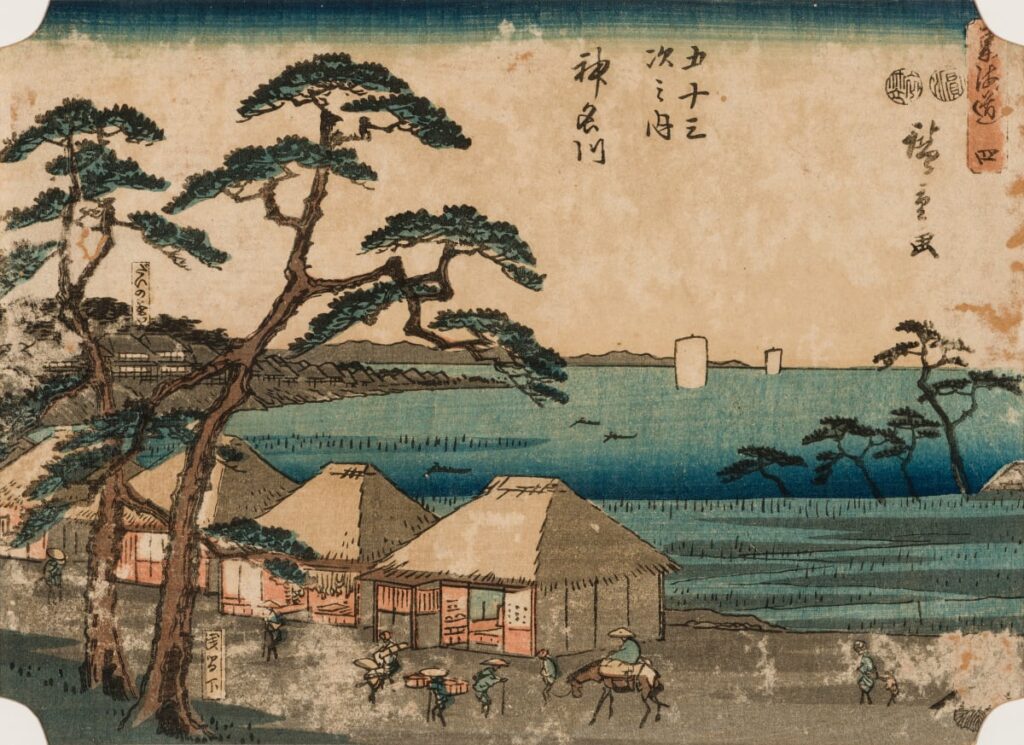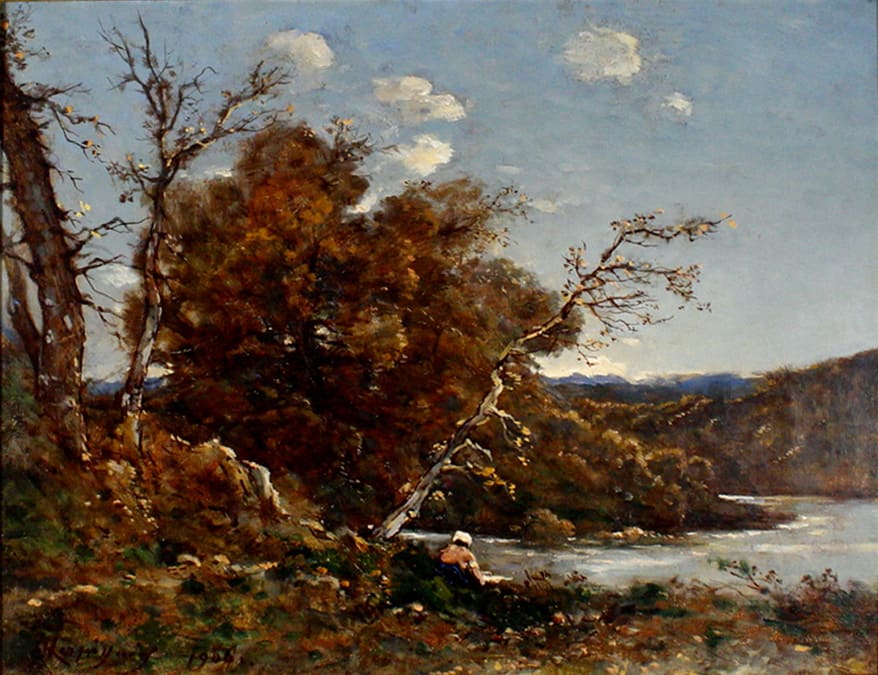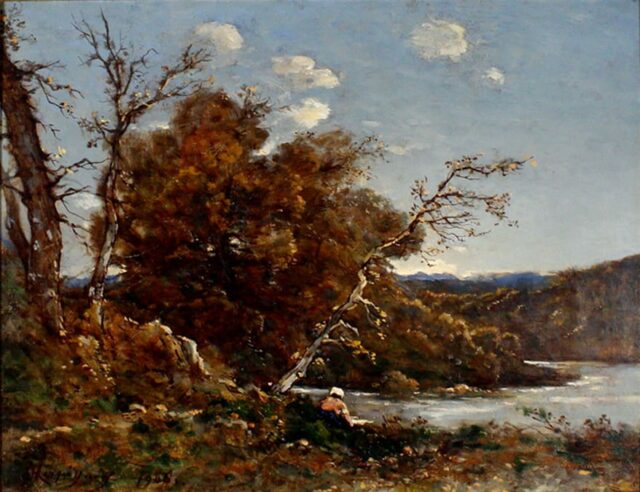I remember three years ago when I just started working in the gallery, my first task was to add Japanese titles to our Japanese woodblock prints. One of the first ones that I worked on was 台の茶屋 浅間下 (Teahouses on the Bluff, Below Asama) by 歌川広重 (Utagawa Hiroshige). I remember myself searching for the work on the net, browsing through collections in other major museums to confirm my translations. At the same time, I couldn’t help but wonder, how did these woodblock prints, produced back in the 19th century, travel all the way across the Pacific and arrive here in Davidson? That’s when I first heard about Joan Huntley, who generously brought many of these artistic treasures to Davidson.

The Joan Huntley collection consists of artworks gifted by Mrs. Huntley and works acquired by the gallery from the Joan Huntley Art Acquisition Fund. The most recent additions are a few landscape paintings by artists such as Théodore Rousseau, Jean-Francois Millet, and Eugene Boudin. These artists were identified as part of a nineteenth-century school of painting that Ms. Huntley was greatly fond of. The Barbizon School is a group of French artists who, captivated by the beauty of the landscape, ventured outside of Paris to work from nature. In early nineteenth-century France, pure landscape paintings were placed low in the hierarchy of historical subjects recognized by the conservative academy. But the status quo shifted when the academy turned its attention to the landscapes in historical paintings. Prompted by the new interest in historical landscape paintings sweeping across France, the group of artists mentioned above joined the wave, but with specific attentiveness to natural sceneries that are not necessarily overarched by the grand historical narrative. The artists explored naturalism by painting in nature, most prominently in Fontainebleau Forest, walking outside of their neoclassical classrooms, and painting through looking and feeling. [1]
The sense of intimacy that a body experiences in nature is well evident in Henri-Joseph Harpignies’s Autumn Landscape with Washerwoman at the River. The artist’s study of light and color specifically captured my attention. Looking at the painting, I could almost feel the gentle autumn sunlight, not as dazzling as in summer nor as distanced as in winter, casting onto the browned autumn leaves and creating a warm ambiance. Yet, the tilted trees and waving leaves all respond to the wind moving across the landscape. The bare trees suggest that it is probably late autumn already. The color of the sky and the river is tuned down to give a sense of frostiness. The painting captures the bodily experience of autumn, the most pleasant season of the year when it is somewhat cozy but a little chilly. Touches of green and brown overlap and blend into each other on the ground so that one could almost smell the damp fallen leaves covering the grass underneath.

The Autumn Landscape with Washerwoman at the River is not very similar to Teahouses on the Bluff. The two paintings were painted on two opposite sides of the earth and half a century apart in time. But they meet each other in our collection. I decided to do a little more research on the two genres, Japanese woodblock prints and Barbizon school of landscape paintings and found that the two lines that seem to be so far apart in time and space have actually met decades ago. The intersection is impressionism. In the late 1860s, the Barbizon painters attracted the attention of a younger generation of French artists who embraced the en plein air method and the interest in the rendering of light and color and later developed into the impressionism movement. During the same period, in 1867, 100 Japanese Ukiyo-e engravings were put on display and sold at the Universal Exhibition in Paris. The new angle that frames the subjects, the simple and refined color ranges, and the total lack of chiaroscuro thrilled the impressionist. Claude Monet, who collected the most Japanese prints among French impressionists, actually collected Utagawa Hiroshige’s works. [2]
The Joan Huntley’s collection, like many art collections, is almost a miniature of the networks of communication in the global art scene. My exploration into the collection reminded me of the excitement when works from across time and space encounter each other and how much innovation could sparkle from such encounter. I remember my first visit to the gallery’s storage space, pulling out racks, finding works that I love and sometimes discovering how two pieces share similarities or connections. It’s these little moments of serendipity that keep reminding us of the love for arts we all share.
- https://www.metmuseum.org/toah/hd/bfpn/hd_bfpn.htm
- https://artgateblog.altervista.org/from-hiroshige-to-monet-interpretation-of-japanese-prints-in-impressionism/

